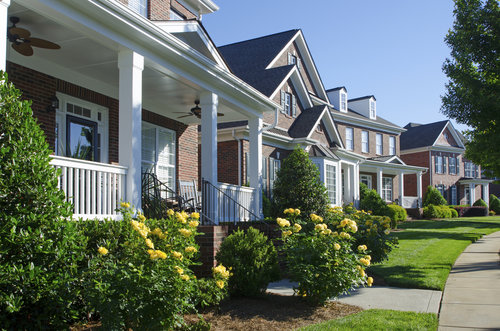A nationwide total of 850,000 single-family home starts last year will still not be enough to aide the housing shortage crisis across the country as demand continues to increase. To make matters worse, materials are getting more expensive, making it even harder for builders to keep up with significant housing demands.
“We probably need about 1.2 million single-family starts,” Robert Dietz, chief economist of the National Association of Home Builders told The Morning Call.
The reason for the housing shortage used to be lack of labor, but is now due to lack of affordable lots and higher priced materials. Lumber prices have spiked 62 percent since January 2017, a result of the Trump administration’s tariffs on Canadian wood products. This is a problem for builders because about a third of wood used in the U.S. comes from Canada. As a result of more expensive materials, the price of a typical home is about $9,000 more.
“Inflation is the foe in the fight to maintain affordability,” said Dietz.
Dietz also added that a lack of construction industry workers is not helping the housing market in many areas across the country. “Labor has been an issue of the industry for the last four or five years,” he said. “The job openings rate in the construction industry now is actually higher than it was at the peak of the building boom,” even though builders are producing fewer houses than in the early 2000s.
In other real estate news:
- Zillow announced a $650 million public stock offering, half in stock and half in senior notes, which could be used to fund future acquisitions and growth, according to Inman. A spokesperson told Inman that Zillow will not use the money to fund home purchases. “Additionally, Zillow Group may choose to use a portion of the net proceeds to expand its current business through acquisitions of, or investments in, other businesses, products or technologies,” Zillow wrote to its investors. “However, Zillow Group has no definitive agreements or commitments with respect to any such acquisitions or investments at this time.”
- Yardi reported that the slowing multifamily market will lead to a nationwide rent growth of 2.9 percent, just short of the historical average. The reason for prolonged delivery time is due to rising construction cost and worker shortages. Despite downfalls, supply is reaching a steady pace, with about 625,000 units under construction. Yardi predicts that while only 290,000 units will deliver this year, a 2.2 increase in total apartment stock, there is still an abundance of capital and more investors are looking to buy than sell.
- Mobile house shopping app Homesnap scheduled a total of 500,000 home showings each year since partnering with ShowingTime in 2015, according to Inman. “It’s clear from the numbers that the Homesnap integration with ShowingTime has been a success,” said ShowingTime President Michael Lane. The number of scheduled showings proved to be significant given the fact that the service reaches roughly 850,000 agents.
- The S&P CoreLogic Case-Shiller saw more than a 6 percent increase in home prices over the past month. The annual 10-city composite home price gain came in at 6.2 percent, down from 6.4 percent last month, while the 20-city composite saw at 6.6 percent year-over-year, just down from the 6.7 percent last month. “Home prices continued their climb with the S&P CoreLogic Case -Shiller National Index up 6.4 percent in the past 12 months,” said David M. Blitzer, managing director and chairman of the Index Committee at S&P Dow Jones Indices. Continuing recent trends, Seattle, Las Vegas and San Francisco saw the highest year-over-year gains among 20 cities.
- The main reason most millennials do not live in their ideal location, typically in or near central neighborhoods, is due to cost barriers. About 83 percent of millennials surveyed by RentCafe revealed that they live in a less than ideal location while the cost of rent was their number one concern. More than half of these people said that they were not willing to pay any more than what they are already paying, while 43 percent of people said they would be willing to pay a maximum of $100 more.
- Despite the increasing popularity of home-sharing services like Airbnb, most Americans still do not rely on them as their first choice when planning trips. A study by Allianz Global Assistance showed that about 53 percent of Americans were either “not very likely” or “not at all likely” to use a sharing economy service. Those who use these services account for a much smaller portion than those who are familiar with them (83 percent), which has jumped nearly 30 percent since last year. “This is the first time we’ve seen intent to use sharing economy services decline, particularly among millennials, which is surprising as they led its early adoption,” said Daniel Durazo, director of communications at Allianz Global Assistance, in a statement. “Millennials appreciate the value and authentic local experiences that are offered by sharing economy services, while they also like the product and overall experience offered by traditional services.”

